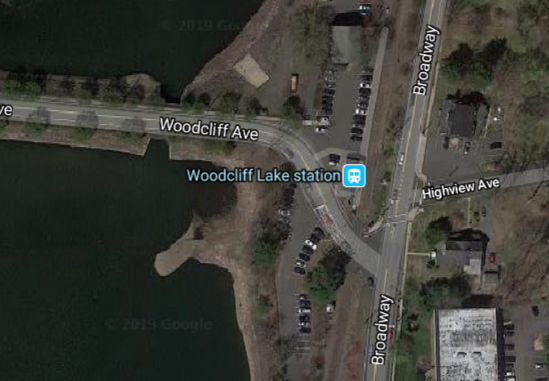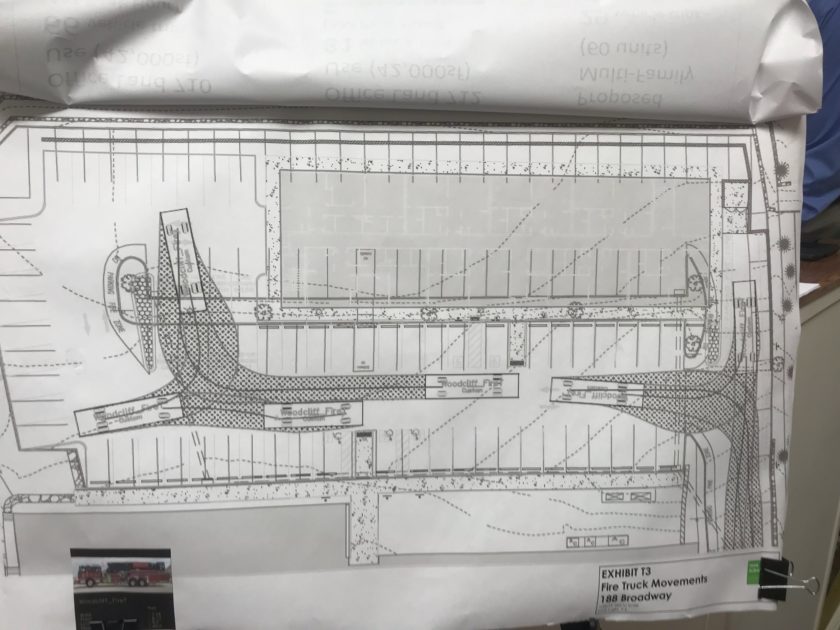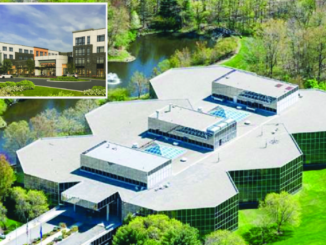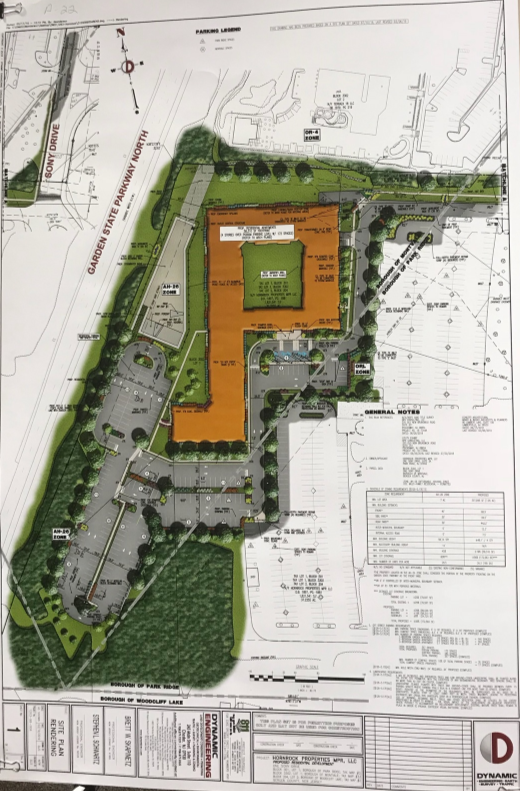
WOODCLIFF LAKE, N.J.—A final hearing on an application to build a 60-unit, two-building multifamily complex at 188 Broadway is scheduled June 25 after the developer’s planning and traffic experts answered scores of questions from Zoning Board members and the public at a nearly four-hour hearing on June 4.
The applicant’s attorney, James Delia, said no additional experts will be presented by 188 Broadway LLC.
The next meeting will feature comments from Zoning Board professionals related to engineering, planning and traffic, questions from board members and an opportunity for public comment on any aspect of the proposed project.
Previously, the public was restricted to only asking questions on specific testimony provided by each applicant expert.
At the final public comment session, residents are allowed to offer personal opinions and comments on any aspect of the proposed development within a five-minute time period.
Throughout six previous hearings, members of a local anti-development group, Woodcliff Lake SHINE, have attended wearing “SOD” stickers, for Stop Overdevelopment, and have questioned the potential impacts from traffic, especially with a crowded, busy intersection at Woodcliff Avenue and Broadway and an active commuter train station nearby.
Other possible impacts questioned by opponents included effects on local schools, why affordable units were needed since an affordable plan was already approved, and why a second building was necessary on the site.
Planner Joseph Burgis and traffic engineer Louis Luglio presented limited additional testimony, with Luglio providing estimates of what would occur on Broadway if future traffic volume increased by 10 percent or more vehicles in the future.
He noted that traffic from a residential development, as opposed to a prior office building use, will generate fewer vehicle trips.
Luglio said a projection for future 10 percent traffic increases, which was requested by board members, was not indicative of the proposed residential development.
He said such an increase would lead to longer waits at nearby intersections—but that this would not occur with a new residential development.
He presented graphs to board members that he said showed traffic volumes for how residential, office use, and a future 10 percent traffic increase projection compared to each other.
“The number of trips associated with the residential development is far less than the number of trips associated with the office development,” said Luglio, who testified similarly at a fifth hearing April 23.
Traffic shows ‘net reduction’

He said the new residential development will have “a positive effect” on traffic volumes versus office use and provide a “net reduction” of vehicles.
Luglio said the trip-generation computer model—created by the Institute of Traffic Engineers—that estimates traffic volume aggregates traffic data from “thousands” of similar land uses and is a traffic estimation tool used and accepted by traffic engineers.
He said even if the second residential building that is proposed was not built, it would not significantly affect the number of vehicles generated by the new residential complex.
According to proposed plans, Building One, an existing building which will be renovated, will include 36 rental apartments and Building Two (not yet built) will contain 24 rental units.
Luglio said the traffic-estimation model accounts for “a certain percentage” of renters who may not own a car but noted that the residential traffic estimates are based on “these number of units [will] produce this level of traffic” under questioning from a resident.
Luglio said though the proposed 60-unit complex is near the train station, no reductions in vehicles or trips from 60 units is attributed due to easy access to mass transit.
‘Single digit’ school increase
Burgis said based on previous testimony that the impact on schools from additional students would be “single digit” increases due to 75 percent of units being one-bedroom apartments.
He said based on a Rutgers study and other similar Bergen County developments, “it is clear that this kind of development does not generate a lot of public school children.”
He said between 2009 and 2019, local school enrollment fell from 830 to 735 students; and Pascack Hills High School enrollment fell from 841 in 2009 to 808 in 2019.
Burgis said any additional students could be easily absorbed into the school district.
Chair Christina Hembree wondered about why regional impacts are not being considered—by the developer proposing a new 60-unit complex locally as well as developers in Park Ridge and Montvale who are building multi-unit developments.
She wondered about local development impacts on the Pascack Valley in general from all local developments occurring region-wide.
“And nobody is looking at the big picture. Why?” she asked.
Burgis said the “unmet need” of an affordable housing settlement was based on regional housing needs and communities are obligated to address a portion of that, which its proposed 60 unit complex —with nine affordable rental units—was doing.
Hembree said “other factors will have an impact and affect what you [the applicant] are doing” and cited the applicant’s need to get approval from the county to make a left-hand turn upon exiting onto Broadway as one issue that may affect traffic flow.
She asked, “Whose responsibility is it” to get an understanding of regional impacts—such as traffic —before a decision is made.
Not for office use?

Resident Gwenn Levine wondered about how the developer determined that 188 Broadway was not suitable for office use as required by local zoning ordinance.
Burgis said though an office building exists on site, he previously cited special reasons why the use is no longer suited for office use and that the applicant should be granted a variance.
Resident Alex Cutro questioned Burgis’s testimony that a new 60-unit complex will be good for Woodcliff Lake.
Burgis said that affordable housing obligations have been around since the 1970s and every municipality must meet such obligations.
Affordable units ‘not a burden’
Burgis said affordable housing is housing for moderate-income households “and not a burden on municipalities.”
Affordable units also include low-income and very low-income units and prices are based on median incomes compiled for housing regions statewide.
Cutro also wondered if future high school student projections took into account future Montvale developments and student projections and Burgis said no.
Montvale and Woodcliff Lake students attend Pascack Hills High School in Montvale, operated by Pascack Valley Regional High School District.
Another resident, Laurie Jeffers, asked if projected new students from Montvale from new developments there were taken into account for future enrollment at Pascack Hills High School and she was told this was not done.
Burgis said 42 percent of the site is impervious (paved or roof) and 58 percent is pervious, mostly unpaved, green and open space.
Burgis said placement of a 60-unit multifamily development in a non-residential portion of the proposed site benefits the town and may also encourage other development there.
Nine units would help with unmet need
Throughout his testimony, Burgis repeatedly noted the importance of the borough fulfilling its affordable housing obligation and how the 188 Broadway development would assist them in providing part of “unmet need” in their settlement plan.
Several residents told Burgis that his focus on affordable housing obligations and unmet need—which he brought up a number of times—appeared to not be an answer to specific questions he was being asked.
At one point, Burgis said he had represented other municipalities on affordable housing issues, including Alpine and Park Ridge.
Park Ridge, which is currently negotiating with Fair Share Housing Center on its realistic development potential, or number of actual units to be built, and “unmet need” for housing based on future local redevelopment and construction, has a July 15 case management conference set before Superior Court Judge Gregg Padovano.
‘Much less disruptive’ plan
Woodcliff Lake settled its affordable plan in November 2017, with planning consultant Richard Preiss then calling it “much less disruptive” than proposed multifamily developments being proposed then in Montvale and Park Ridge.
Since that time, Montvale settled its affordable housing plan and one part includes a 185-unit multifamily development, with 37 affordable units, on seven acres of former Sony property, adjoining Park Ridge and Woodcliff Lake.
Park Ridge is currently negotiating a final obligation with Fair Share Housing Center and faces a possible September trial date should negotiations break down.
A developer, Hornrock Properties, is an intervenor contesting Park Ridge’s plan, proposing to build 972 units on a 30-acre former Sony parcel to help Park Ridge satisfy its “unmet need” of affordable housing obligations.
Park Ridge contends it does not need Hornrock assistance to fulfill affordable housing obligations.



